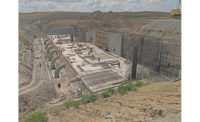During the contract negotiation, the brick quantity had been increased from 4 million to 4.5 million explicitly to anticipate a possible need for a thicker arch. However, the quantity-change negotiations did not envision an increased length of arch.
The engineer’s directive did increase the length of arching, but at the same time, the quantity of bricks required matched the contract amount. However, to perform the arching, Shanly would have to excavate additional rock in order to increase the bore dimensions to accommodate the thickness of the brick tube. The need for additional arching in sections of the tunnel was obvious to both Shanly and the engineer; therefore, the point of contention concerned the obligations Shanly had assumed when he agreed to the tunnel contract.
By the words of the contract, was the contractor obliged to perform arching outside of the western section?
Believing he was not bound to arch outside of the west section, Shanly appealed to the General Court of the Commonwealth of Massachusetts for relief. At the hearings, the attorney general argued, “This contract was a contract for the completion of the entire work” and that the risks of changes were on the contractor.
Over the years after he achieved daylight through the Hoosac Mountain, Shanly made multiple trips to Boston, attempting to dislodge money from the commonwealth based on the work he was forced to perform beyond obligations stated in the contract. Finally, in 1887, he received $79,495.62 of additional compensation, and the matter was closed.
Cliff Schexnayder is a construction consultant in Branford, Conn. He can be reached at cliff.s@asu.edu. Information about his new book, “Builders of the Hoosac Tunnel,” is available at www.upne.com/1942155072.html.







